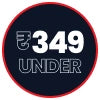So, you've been toying with the idea of starting an online business. You’ve got a great product idea (or maybe a few), and the idea of making sales while you sleep is exciting, but there's just one problem: you have no clue where to begin.
If that sounds like you, take a deep breath. You're far from alone. The good news is, selling online has never been more accessible. The tools, platforms, and communities are out there, what you need is a clear path to get started. This article is your roadmap.
Whether you're launching a side hustle or dreaming of quitting your 9-to-5, we’ll walk you through everything you need to know to start selling online, from finding your niche to shipping your first order. Let’s dive in.
Step 1: Clarify Your Online Business Goals
Before diving into what to sell or how to sell it, get clear on your why.
Ask yourself:
-
Are you testing an idea or ready to go all in?
-
Do you want to build a brand or just flip trending products?
-
Are you looking for quick wins or long-term sustainability?
Your goals will help guide every decision—from platform selection to marketing strategy. If your focus is low-risk, low-investment business models, then something like Deodap dropshipping might be your perfect starting point.
Step 2: Choose a Niche That Fits You (And the Market)
Here’s the secret: you don’t need to sell everything to everyone.
A niche helps you stand out and connect with a specific audience. The more laser-focused you are, the easier it is to craft compelling offers, run targeted ads, and build a loyal customer base.
How to Find the Right Niche:
-
Follow your interests. Selling something you know or love makes it easier to stay motivated.
-
Solve a problem. Great businesses are built on real solutions.
-
Look at trends. Use tools like Google Trends, TikTok, or Amazon’s bestsellers to spot rising products.
Whether it’s eco-friendly products, tech gadgets, or minimalist home décor, there’s a niche with buyers waiting. In fact, many dropshipping stores thrive by focusing on tightly defined audiences.
Step 3: Decide What to Sell
You’ve got your niche, now let’s talk products.
Here are some popular options:
Physical Products:
-
Branded or generic goods via suppliers
-
Handmade items or DIY crafts
-
Dropshipping products (no inventory needed!)
Digital Products:
-
Ebooks and guides
-
Templates, planners, or printables
-
Online courses
Services:
-
Coaching or consulting
-
Virtual assistance
-
Graphic design or copywriting
Not sure what to pick? Start with just one product. Test it, improve it, and scale from there. With models like dropshipping, you can start without stocking or shipping anything yourself.
Step 4: Choose Where You’ll Sell
Here’s the breakdown of your main options:
A. Launch Your Own Online Store
-
Use Shopify, WooCommerce, or other platforms to build a store
-
Ideal for building your own brand
-
Gives you full control over customer experience
B. Use Online Marketplaces
-
Amazon, eBay, Etsy, and others already have traffic
-
You gain instant access to millions of buyers
-
But you'll face competition and fees
C. Social Selling
-
Sell through Instagram, Facebook Shops, or even TikTok
-
Perfect for visual products and impulse buyers
Starting your own dropshipping store in India is easier than ever, especially when the technical backend is already handled. Choose based on your skills, budget, and product type.
Step 5: Build Your Store the Right Way
Once you’ve chosen your platform, it’s time to build your virtual storefront.
Essentials to Include:
-
A professional-looking homepage
-
Clean product pages with clear photos and descriptions
-
Easy-to-navigate layout
-
Mobile-friendly design
-
Secure checkout with multiple payment options
First impressions matter, especially online. If you’re using Deodap Dropshipping, much of the heavy lifting, from product sourcing to fulfillment, is already taken care of, so you can focus on growth.
Step 6: Work Out Fulfillment and Shipping
What happens after someone buys from you?
Depending on your model, you can:
-
Ship items yourself (great for handmade goods)
-
Use third-party logistics (like Fulfillment by Amazon)
-
Or go the easy route with dropshipping, where your supplier handles everything
If you're interested in the last option, don’t miss the free Dropshipping Webinar linked below, it's designed specifically to help beginners understand how fulfillment works without ever touching inventory.
Step 7: Set Your Pricing Strategy
Get your math right from the start. Your pricing should reflect:
-
Cost of goods sold
-
Shipping and fees
-
Marketing expenses
-
Desired profit margin
Tip:
Use "charm pricing" like $29.99 instead of $30. Test what works best with your audience.
With dropshipping, your supplier often provides pricing suggestions and margins—helping you stay competitive while turning a profit.
Step 8: Promote Like a Pro
Even the best products won’t sell if no one sees them. Marketing is the fuel that powers your sales engine.
Best Ways to Market Your Online Business:
📱 Social Media Marketing
Use Instagram, Pinterest, and TikTok to share product photos, behind-the-scenes content, and customer reviews.
📧 Email Marketing
Capture leads with pop-ups or discounts. Email is still one of the best-performing channels for sales.
🛠️ SEO
Optimize your site and product pages with keywords like dropshipping business. Create blogs, guides, or FAQs that help potential customers discover your site.
🤝 Influencer Collaborations
Reach out to micro-influencers in your niche. Offer products in exchange for a shoutout or review.
💰 Paid Ads
If you have a budget, test Facebook or Google Ads. Always track your ROI and start with a small daily spend.
Step 9: Take Customer Service Seriously
Online buyers have endless options, so top-notch service helps you stand out.
Golden Rules:
-
Respond quickly to inquiries
-
Be transparent with shipping times and policies
-
Make returns simple and hassle-free
-
Collect and showcase reviews
Your reputation = your brand. Treat every customer like gold, and they’ll return the favor with loyalty and word-of-mouth referrals.
Step 10: Learn, Measure, Improve
Data is your best friend. Use it to learn what’s working and what’s not.
What to track:
-
Website traffic
-
Conversion rates
-
Abandoned carts
-
Customer feedback
Continue refining your offerings, trying new marketing strategies, and investing in learning. Remember: every great store started as a beginner project.
Want to Learn Dropshipping for Free?
Ready to learn how you can launch a business with zero inventory and minimal risk?
👉 Join our Free Dropshipping Webinar hosted by experts at Deodap!
✅ Click here to register
Here’s what you’ll learn:
-
How the dropshipping business model works
-
Why it’s perfect for new entrepreneurs
-
Realistic profit margins and how to price products
-
How to manage and grow your dropshipping store like a pro
📆 Seats are limited, and the next session begins in just a few hours! Don't miss your chance to kickstart your online journey with insider knowledge from real experts.
Final Words: Your Online Business Starts Now
There’s never been a better time to launch your online store. Whether you’re going full DIY or taking the smarter route with Deodap Dropshipping, what matters most is that you start.
No one figures it all out on Day 1—but with every product listing, ad test, or email you send, you’ll learn and grow.
You’ve already taken the first step by reading this guide. The next step? Taking action.























































































































































